Visitor Information.
Before you visit the island of Ireland, there are some things you should know so that your vacation is hassle-free and safe.
Below you'll find useful visitor information that I've turned into a PDF that you can refer back to before you head off on your trip to the Emerald Isle or even bring with you. The PDF can easily be stored on your digital device or printed.
Currency
Like the other 18 countries in the European Union, Ireland uses the Euro currency and has been doing so since Jan. 1, 2002.
There are eight different denominations of Euro coins. They include the 1-cent, 2-cent, 5-cent, 10-cent, 20-cent, 50-cent, €1 and €2 coins.
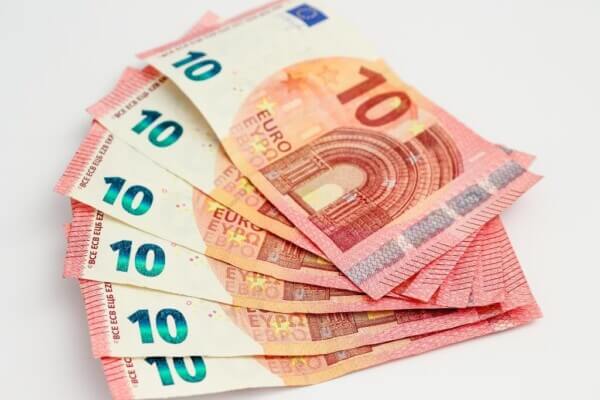
The Euro banknotes include the €5, €10, €20, €50, €100, €200 and €500 notes.
You can exchange your currency at the airport. However, the rates are often higher, which doesn't make this an economical way of getting cash.
You can certainly bring a small amount of Euro with you that you can get from your bank at home, but there is no need to carry large sums of cash on you when traveling to Ireland.
Most banks will only provide you with foreign currency if you have a bank account with them. However, TD Bank is an exception, offering access to 55+ foreign currencies that can be ordered in person or online.
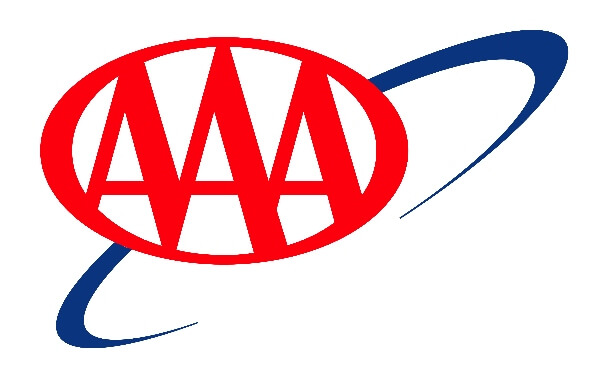
If you are a member of AAA, you can also order foreign cash without incurring a fee. AAA provides access to 80+ foreign currencies, which is delivered within a matter of days depending on the shipping options that you choose.
Monetary transactions in Ireland, like many countries across the world, are largely done by bank card, although you may need cash for certain incidentals and a taxi cab or two if the driver insists on cash.
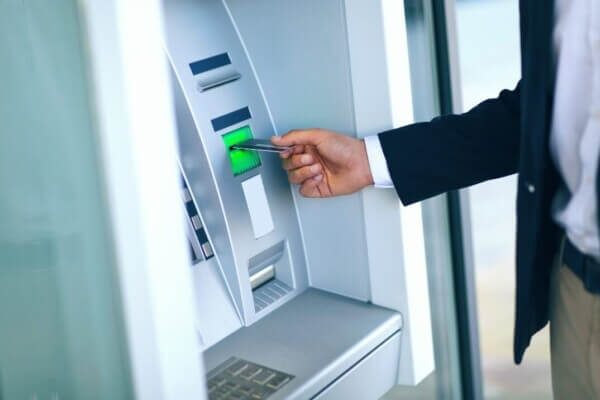
You'll find ATMs all across the country. I suggest that you use a bank card that will not charge you a foreign transaction fee.
I personally recommend the Charles Schwab debit card, which refunds you any fees that are incurred whether you use it at home or abroad. This is the card that I use here in the U.S. and in Ireland.
In Northern Ireland, the unit of currency is the British Sterling. The denominations of coins in the British pound system include the 1p, 2p, 5p, 10p, 20p, 50p, £1 and £2 coins.
Notes are available in £5, £10, £20 and £50 denominations.
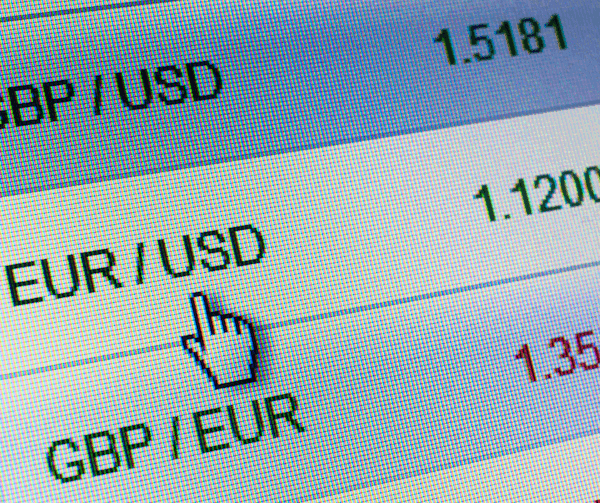
To check the currency exchange rate before you leave, I suggest you download the XE Currency Converter, which provides live updates on rates and also allows you to store and view them when you're offline.
If you are traveling to Northern Ireland, simply wait until you get there and take money from an ATM. If you must get Sterling while in the Republic of Ireland, go into any post office since banks won't issue foreign currency unless you have an account with them and in that case, you need to order it in advance.
Measuring System
The Republic of Ireland uses the metric system (the measurement of alcohol is still in pints, however) and Northern Ireland, like the remainder of the United Kingdom, uses the British Imperial system for measuring distance, speed, and liquid quantities.
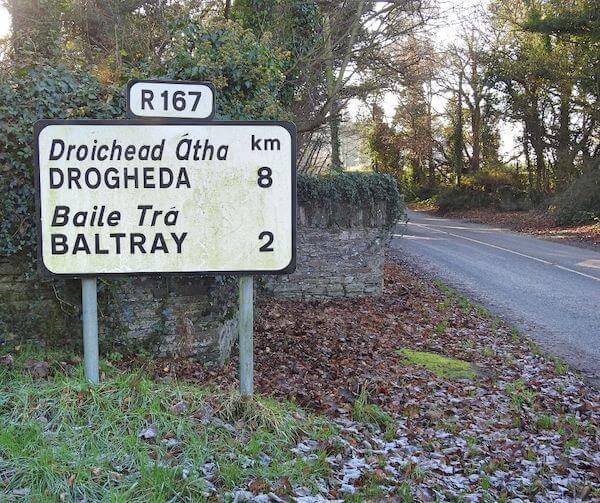
Most of the government agencies, as well as British commerce and other industries, use metric units.
On all of Ireland’s roads, everything is measured in kilometers and speedometers are also measured this way.
In Northern Ireland, distance is measured in miles.
One mile is equal to 1.609 kilometers.
Electricity
In Ireland and Northern Ireland, the standard voltage is 230V on a 50Hz frequency.
This is a piece of key visitor information that you should know especially if you want to use electronic devices while traveling around Ireland.
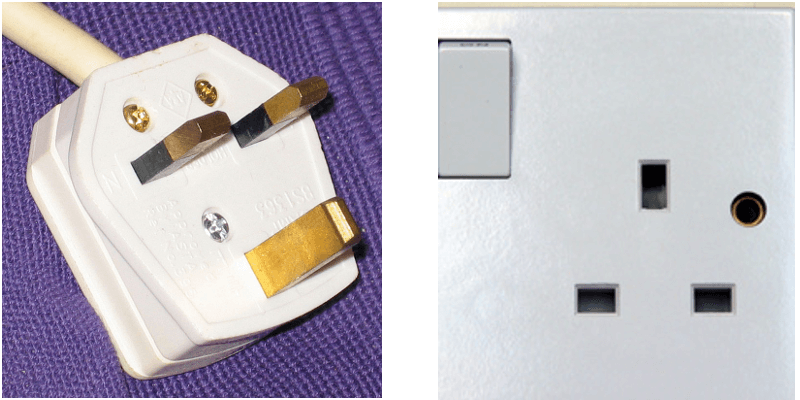
The average plug has 3 square pins in it and is known as a Type G plug.
If you are coming from the U.K. and other parts of Europe, Australia and indeed most of Asia and Africa, you can use appliances like hairdryers, straighteners and shavers without issue since the voltage is the same as the one in Ireland.
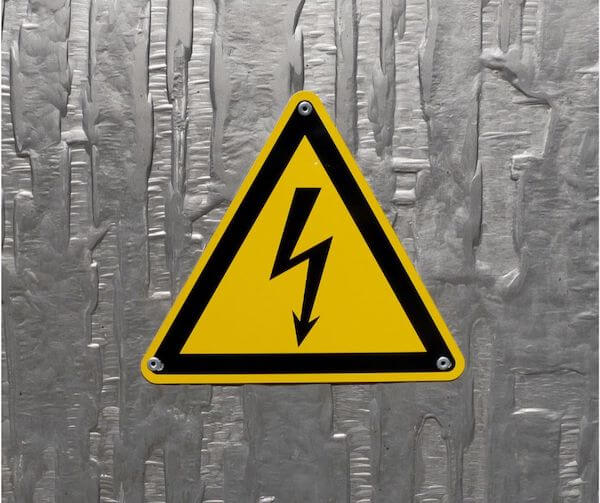
By clicking on the Amazon link below, I may earn a small commission from the Amazon Associates Program. However, you will not incur any additional costs by doing so.
If you are traveling from North America, you will need either a worldwide plug adaptor or a power or voltage converter depending on the electrical device you want to use.
For example, hairdryers, straighteners and curling irons purchased in the U.S. and in Canada cannot handle 230 volts of electricity, which is why you will need a transformer/converter to ”step down” the voltage and get them to work in Ireland and Northern Ireland.
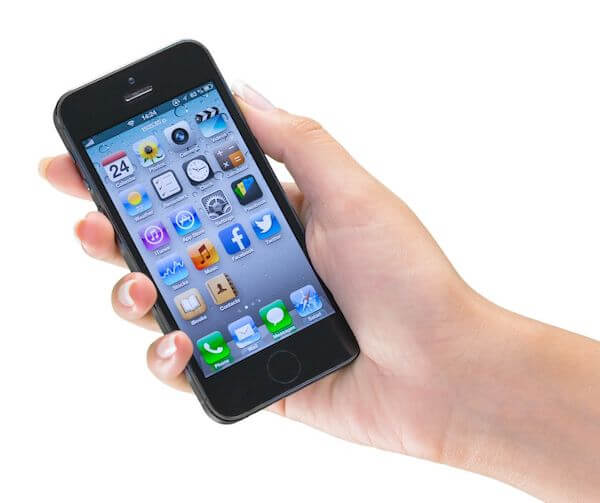
@billionphotos.
Most mobile phones, iPads and other modern devices can handle that voltage. But just to be sure, take a look at the sticker on the product. You should see something like, “100V-240V“ or “110V-220V.“
If your device is compatible with Ireland’s voltage power, then all you need is a worldwide plug adaptor like the one mentioned above and that will fit into an Irish outlet, thereby allowing you to use your devices as you normally would.
Driving in Ireland – Road Signs
Driving in Ireland can be confusing for visitors from North America, mainland Europe and other places where they normally drive on the right side of the road.
In Ireland, as in England, driving takes place on the left.
If you decide to rent a car in Ireland, you'll need to familiarize yourself with Ireland’s many road signs.
Tourist signs are usually brown with white lettering while other signs for various destinations throughout Ireland might be on white signs with black lettering or more recently, on green backgrounds with white lettering.
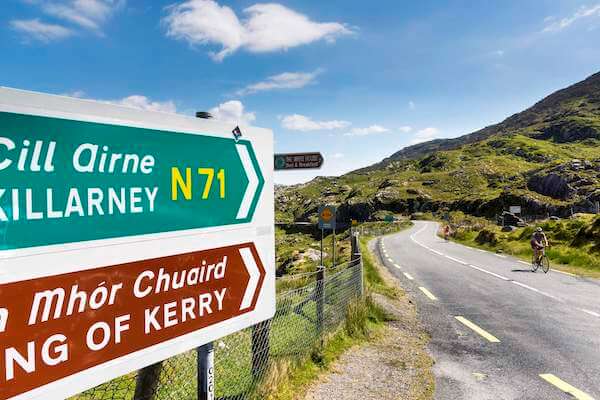
You will frequently see the names of towns and cities in the Irish language. Don’t fear. They will also be translated into English.
Tourist information signs in Northern Ireland are also brown with white lettering. Regular road signs with the names of towns and cities in Northern Ireland are on green signs with white lettering.
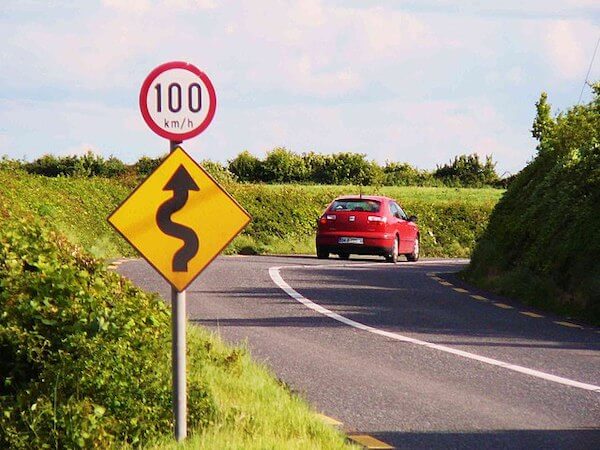
The speed limit in Ireland is measured in kilometers and varies depending on what kind of road you are driving on.
In urban areas, it is 50 kph (31.07 miles per hour); on open roads, it is 80-100 kph (49.71 to 62.14 miles per hour); and on dual carriageways and motorways, it is 120 kph (74.56 miles per hour).
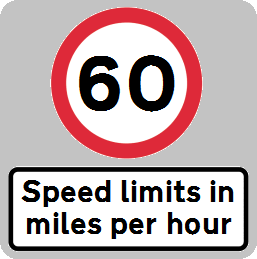
In Northern Ireland, the speed limit is measured in miles per hour.
In towns and cities, it is 30 miles per hour (45 km); on open roads, it is 60 miles per hour (95 km) and on motorways, it is 70 miles per hour (110 km).
Getting Around Ireland on Public Transportation
If you are not renting a car or using the services of a private tour company, you'll want to look into Ireland's train and bus systems.
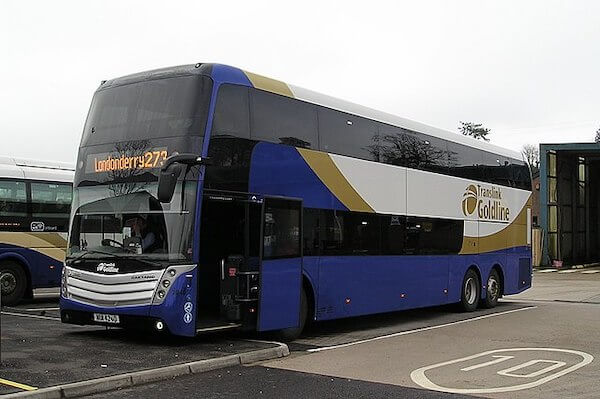
To get around by bus, you should become familiar with the bus routes operated by Bus Eireann.
To view bus journeys across the country, I recommend you get the TFI Live app. Once you know the route, you can purchase the appropriate tickets on the TFI Go app. TFI stands for Transport for Ireland.
If traveling by train, Irish Rail (in the Republic) will be your go-to service.
In Northern Ireland, the bus and train services are managed by Translink.
WiFi in Ireland
Like many countries across the globe, most people in Ireland use WiFi.
It is relatively easy to stay connected if you know where to go for free WiFi.
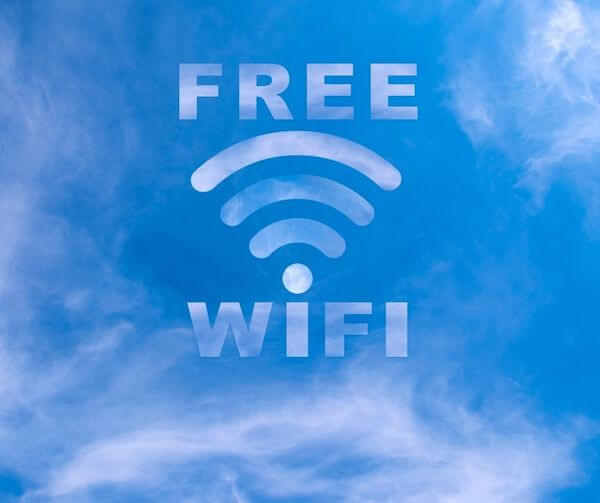
While it’s possible to get free Wifi in Irish airports, as well as in restaurants, coffee shops and pubs across the country, having continuous Wifi while you travel isn’t possible unless you purchase an international usage plan from your mobile phone carrier or you rent a personal WiFi device like the one that WiFi Candy provides.
You can rent a Wifi Candy device for as little as three days or for as long as two weeks.
You can collect the device at the excess baggage in T1 at the Arrivals area in Dublin Airport. Devices can also be delivered to your accommodation.
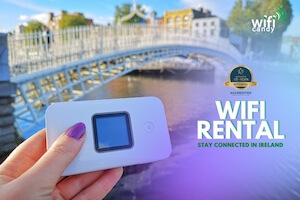 When you’re leaving Ireland, simply put the device in the packaging that’s provided and drop it in the collection box in Dublin Airport's Terminal 2 (between Cafe Nero and the Arrivals Gate located at Level 1). You should do this before heading to the departure gates.
When you’re leaving Ireland, simply put the device in the packaging that’s provided and drop it in the collection box in Dublin Airport's Terminal 2 (between Cafe Nero and the Arrivals Gate located at Level 1). You should do this before heading to the departure gates.
Wifi Candy is easy to use and syncs well with either an iPhone or Android device. It can also be connected with up to 8 phones and other devices where you can get Internet access.
In Northern Ireland, you’ll find a free public WiFi service in Belfast, part of the city's Super Connected Belfast scheme.
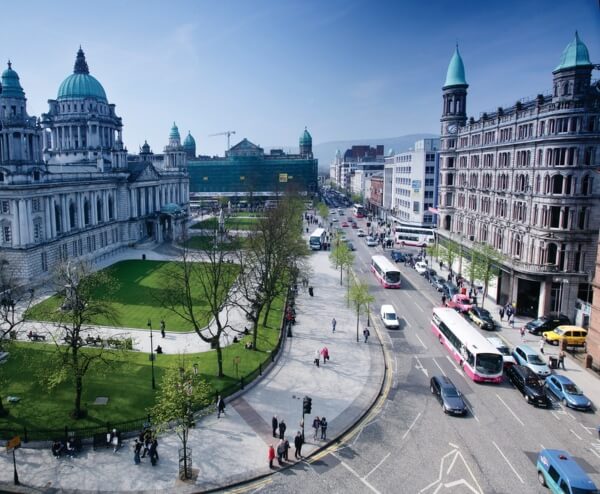
The network is available at 109 hotspots, including visitor attractions, community and leisure centers, and other public buildings.
Other options include buying a SIM card for your unlocked phone. You'll find more information on this important topic in this blog post.
Emergency Situations
While most people visiting the island of Ireland do not encounter emergency situations, it is always good to know what to do in case of such an event.
It is wise to keep this sort of visitor information handy and accessible while you're vacationing in Ireland.
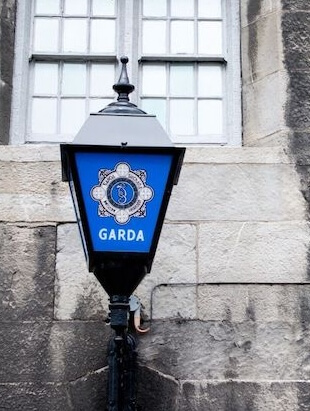
If you need an ambulance, police or the local fire department, in the Republic of Ireland, dial 999 or 112. If in Northern Ireland, dial 999 only.
The agency in charge of maintaining law and order in the Republic is called An Garda Siochana.
In Northern Ireland, the PSNI is in charge.
Tourists who are victims of a crime can contact the Irish Tourist Assistance Service.
Support and assistance are available 7 days a week. Call 01-666-9354 or email [email protected] if you find yourself in need of help.
Safety Tips While Traveling Around Ireland
While Ireland is relatively safe, visitors should watch their belongings, especially in places like Dublin where crime is higher than in other parts of Ireland.
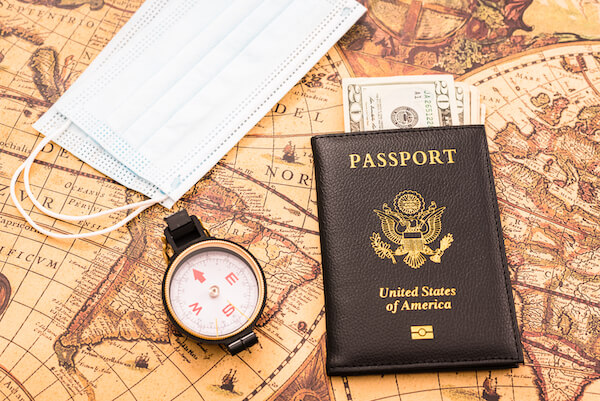
Here are some safety/visitor information tips to keep in mind as you travel throughout Ireland.
By clicking on the Amazon link below, I may earn a small commission from the Amazon Associates Program. However, you will not incur any additional costs by doing so.
- To protect yourself in the event of an emergency, it’s always a good idea to purchase travel insurance before your trip.
- Be sure to tell your bank that you are traveling so that they can put safety measures in place when using your bank card.
- It goes without saying that you should not carry valuables on you while sightseeing. That applies to visiting any destination, not just Ireland.
- Crossbody bags are recommended when sightseeing or even in a pub or restaurant. They make ideal daypacks because pickpockets can’t snatch them or get access to your belongings as they can with over-the-shoulder bags.
- Make copies of your passport and any other important documents in the event they are stolen or lost. Store them online in Google Drive, Dropbox or another file hosting service.
- Do not walk around with your mobile phone in your back pocket or anyplace else that is visible to pickpockets.
- If your phone is stolen, having the make, model and IMEI number of your phone is useful. To obtain the number, simply dial *#06# and the number will appear on your screen. You do not have to use the call feature.
